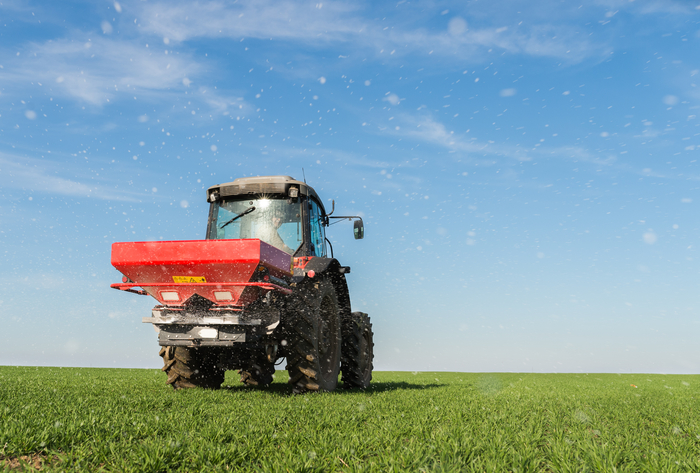With AHDB reporting grass growth is 40% behind the 64.7 kg DM/ha recorded last spring, careful consideration needs to be given to the nutritional programme of grassland to ensure sufficient quantity and quality of silage is produced.
“Despite grass growth in mid-April increasing from the 17.09 kg DM/ha recorded in March to 39.17 kg DM/ha, the quality of the grass is below average in the lead up to first-cut,” says Dave Mitchell, Wynnstay fertiliser manager.
“The wet start to spring has meant fertiliser applications have been delayed, and in general grass has looked extremely hungry for nutrients during this key growing period.”
With weather improving nitrogen (N) is finally being applied, but Mr Mitchell says when farmers are considering cutting the amount of N applied should be measured.
He explains if excessive N is applied too close to cutting it won’t all be used up by the plant ahead of cutting, resulting in excess nitrates in the crop of silage.
“Whenever you apply N to your silage crop, close consideration should be given to the timing of your cut, to allow the N to be effectively utilised. With poor weather forcing a delay in applications, quantities should be reduced if producers are still looking to silage in the next few weeks.
“Although producers are ‘chasing’ fertiliser applications to make up for lost time, reducing the amount of N now won’t have a negative effect on future cuts, providing a calculated amount is applied and a bespoke fertiliser plan is implemented for the rest of the season,” he says.
“Testing leaf samples in conjunction with soil tests will give an accurate measure of nutrients taken up by the plant and highlight both any deficiencies or excesses in nutrient levels, to ensure quality forage is produced in successive cuts.
“A fertiliser plan should also consider which fertiliser products are most suitable for your grass needs, this is something your local Wynnstay specialist can advise on,” adds Mr Mitchell.
“With forage reserves very low following an unprecedented winter and late spring, many producers are looking to make high levels of quality forage in preparation for next winter. Planning ahead and developing a bespoke nutrient management programme prior to silaging, will help producers meet yield and quality targets.”


